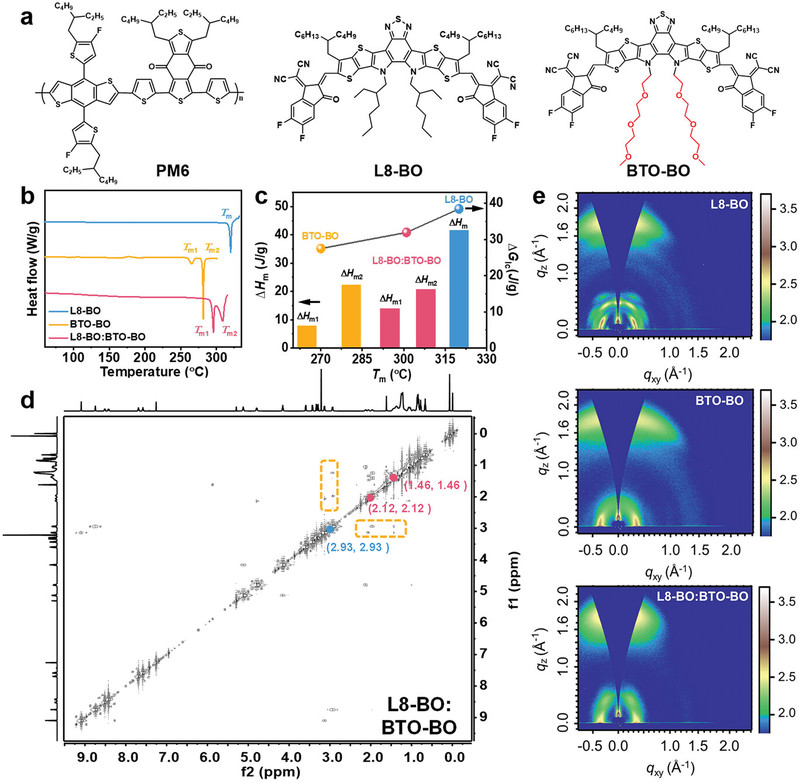Heterogeneous Nucleating Agent for High-Boiling-Point Nonhalogenated Solvent-Processed Organic Solar Cells and Modules
Haiyang Chen1, Weiwei Sun1, Rui Zhang2, Yuting Huang1, Ben Zhang1, Guang Zeng1, Junyuan Ding1, Weijie Chen1, Feng Gao2, Yaowen Li1,3,4*(李耀文), Yongfang Li1,4,5
1Laboratory of Advanced Optoelectronic Materials, Suzhou Key Laboratory of Novel Semiconductor-optoelectronics Materials and Devices, College of Chemistry Chemical Engineering and Materials Science Soochow University Suzhou 215123, China
2Department of Physics Chemistry and Biology(IFM), Linköping University, Linköping SE-58183, Sweden
3State and Local Joint Engineering Laboratory for Novel Functional Polymeric Materials, Jiangsu Key Laboratory of Advanced Functional Polymer Design and Application, College of Chemistry Chemical Engineering and Materials Science, Soochow University, Suzhou 215123, China
4Jiangsu Key Laboratory of Advanced Negative Carbon Technologies, Soochow University, Suzhou 215123, China
5Beijing National Laboratory for Molecular Sciences, CAS Key Laboratory of Organic Solids Institute of Chemistry Chinese Academy of Sciences, Beijing 100190, China
Adv. Mater. 2024, 36, 2402350
Abstract:High-boiling-point nonhalogenated solvents are superior solvents to produce large-area organic solar cells (OSCs) in industry because of their wide processing window and low toxicity; while, these solvents with slow evaporation kinetics will lead excessive aggregation of state-of-the-art small molecule acceptors (e.g. L8-BO), delivering serious efficiency losses. Here, a heterogeneous nucleating agent strategy is developed by grafting oligo (ethylene glycol) side-chains on L8-BO (BTO-BO). The formation energy of the obtained BTO-BO; while, changing from liquid in a solvent to a crystalline phase, is lower than that of L8-BO irrespective of the solvent type. When BTO-BO is added as the third component into the active layer (e.g. PM6:L8-BO), it easily assembles to form numerous seed crystals, which serve as nucleation sites to trigger heterogeneous nucleation and increase nucleation density of L8-BO through strong hydrogen bonding interactions even in high-boiling-point nonhalogenated solvents. Therefore, it can effectively suppress excessive aggregation during growth, achieving ideal phase-separation active layer with small domain sizes and high crystallinity. The resultant toluene-processed OSCs exhibit a record power conversion efficiency (PCE) of 19.42% (certificated 19.12%) with excellent operational stability. The strategy also has superior advantages in large-scale devices, showing a 15.03-cm2 module with a record PCE of 16.35% (certificated 15.97%).

链接://onlinelibrary.wiley.com/doi/10.1002/adma.202402350